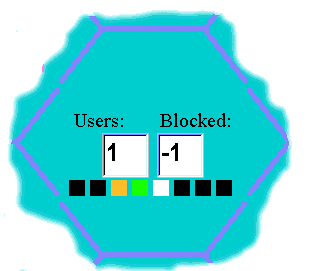
 |
JPL's Wireless Communication Reference WebsiteChapter: Cellular Systems. Section: Frequency reuse, cell planning. |
![]()
You are the operator of a cellular network. Your task is to dynamically assign 8 radio channels to 5 cells. Neighboring cells may not use the same channel.
If you do a good job, i.e., if no users are blocked or if free channels are available, new customers join your network. The erlang traffic load increases. If you block too many customers, they turn to a competitor. You loose traffic.
The goal is to maximize the traffic load.  The
score contains the actual traffic and the maximum since you loaded the page.
The
score contains the actual traffic and the maximum since you loaded the page.
For each cell, you see the number of users attempting to make a call, and the number of 'blocked' users than can not be accommodated. By assigning more channels to this cell, you can reduce the number of blocked users. However, assign a channel to one cell, prohibits you from doing so in adjacent cells.
 |
In this cell one user is active. No user is blocked, and one more user could be accommodated.
|
Your (average) erlang traffic goes down if you block too many users. If the number of blocked users is zero (or negative) the traffic load slowly grows.
![]()
![]()
![]()
![]()
![]()
![]()
![]()
![]()
![]()
![]()
In cells surrounding the area that is under your control some channels are used this restricts your freedom to assign channels.
Go to The Game. You can also choose to run the JavaTM version of the game. The Java version also demonstrates how known DCA algorithms would assign channels.
The game has been developed for JavaScript Version 1.2.
MS Internet Explorer 3 and Netscape 3 do not yet support version 1.2.